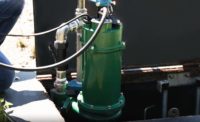During the 2018 ASPE Convention and Expo in Atlanta, Zurn debuted its new software tool, inSpec, Powered by Zurn, which is designed to simplify the submittal process for commercial plumbing engineers. pme recently caught up with Zurn Director of Digital Marketing and Communications David Krohn to discuss how the new digital platform is helping engineers throughout the specification process.
inSpec traces its roots back to an earlier incarnation, Zurn One System, correct?
DK: Zurn developed possibly the first digital specification tools in our industry many years ago, the Zurn One System specifier. It was built for finished plumbing products. If you were specifying a water closet, there would be a picture of the fixture and then the tool would show the accessories that fit. From there, you pull together the specifications. The tool made things a lot easier, but as technology evolved and customer demands evolved, it was time for a specification tool that could streamline even more.
You did some extensive boots-on-the-ground research regarding inSpec?
DK: We traveled across the country and talked to many different specifiers. Our team asked them what they looked for in a specification tool with the intention of making the process easier. We heard again and again that they needed four different things: 1) an advanced configuration engine that encompassed all our product lines; 2) a project-based tool to keep all projects organized in one location, housed in a cloud-like environment; 3) a collaborative platform where they could look at previous projects, copy those projects and get feedback from team members; and 4) make it easy! They wanted a system that is equally intuitive and simple to use.
How important is the collaboration part of the system?
DK: With this tool, you can have two or three specifiers from the same firm working on a project. They go into inSpec and they can share. One might be doing the rough-in, the other the finished plumbing, and the third person is making sure everything is good across the board. All three can work directly on the same project using inSpec. You are also able to email the output document right from the tool. If you wanted to run the fixtures by the architect on the project, you email the project submittal for fixtures right from the tool, as opposed to downloading everything and saving it. This way, you are saving time and still putting that collaboration into the project.
Where are other efficiencies being realized in the tool?
DK: As an example, you can take an existing school footprint, copy it, and rename the project. You are able to build master specifications directly into the tool. You build out the configurations once, save it in one location, and then you can select any number of configurations and copy into an existing or new project. You are able to spec a building in a matter of minutes and have it all in one location. The power of the tool having that copy feature adds so much more efficiency.
What has the feedback been thus far?
DK: The general feedback is it speeds up the spec process. We are also hearing how convenient it is to have multiple projects in one location. We want to add value to the specifier – make his or her job easier. We know the specification process can be cumbersome and difficult. Our end goal was to make the specification process easier for our customers.
Where does Zurn go from here?
DK: We live in a world of innovation. Our industry is no different. We now have technology that wasn’t available 10, even five years ago. Zurn is focused on being able to progress with technology to meet the evolving needs and wants of our customers. We just launched our first IoT connected device to create smarter plumbing systems within commercial buildings. We’re building on technology and aligning with our customer expectations.




